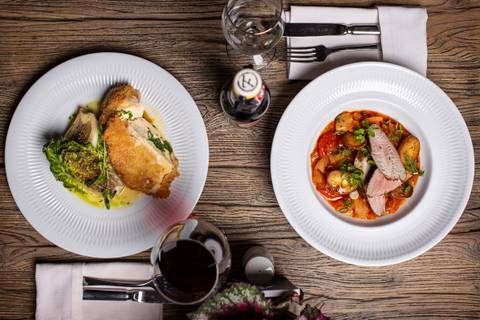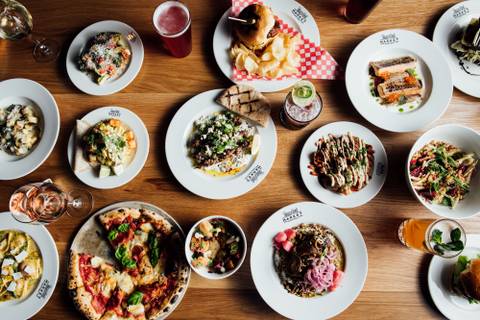For locals, the appearance of street food and fast-food restaurants are most closely connected with America and Hungary’s régime change of 1989. But the genre goes way back to Ancient Rome, where eating on the street was regular practice. Here we look how the people of Budapest fed themselves while in daily haste – on trains and at grill bars.
Snacking on the tracks
The roots of modern passenger-focused catering services can be found in the 19th century, after travelling by train became a more prominent feature of daily life. At first, the trains used to stop for short lunch breaks, allowing passengers to visit the nearby inns or restaurants to eat. As trains became faster, routes longer and business more urgent, another, more time-efficient practice became necessary.
The idea of sleeping and dining compartments came from America, and was later introduced in Europe, arriving in Hungary in the 1880s. From then on, passengers had access to dining carriages and buffet carts on longer train journeys, especially in first and second class. The quality of the dishes on offer was often on a par with a hotel’s or restaurant’s.
Food services appeared on railway station platforms in the autumn of 1948, provided by the emblematic Utasellátó. They operated food carts, railway station restaurants and fed those at bus stations and ferry ports as well. The number of travellers started dropping in the ’50s, and economic hardships caused the quality of the food served on board trains to decrease, so focus shifted to mobile vendors, buffets and small restaurants at stations.
Cellophane-wrapped packages appeared in the 1950s during a wave of modernisation, and vending machines started appearing at stations, ports and major underpasses in the 1960s. The older generation well remembers Bambi fizzy drinks, salami sandwiches and Utasellátó quick meals.
They were popular across Hungary but particularly patronised at Lake Balaton. Machines were set up in built-up resorts and by campsites of busy holiday destinations, priced at lower-income Hungarian visitors. These machines dispensed not only milk, but chocolate bars, sandwiches and even soup. Gastrofol was another popular brand at the time, its name a combination of the words for 'gastronomy' and 'foil'. Accordingly, they served food in foil packages that needed heating up before consuming.
Western influences
Before the 1980s, fast-food places around Hungary were known as self-service restaurants. Factory canteens became self-service in the 1960s, which significantly shortened the time needed to eat lunch at work. Soon this phenomenon spread around cities, causing many to fear the loss of classic restaurant culture.
Real fast-food options appeared before the régime change, in the 1980s in Budapest. One of the most well-known was City Grill, that many remember to this day. This was a charming copy of popular Western franchises, fine-tuned to suit Hungarian tastes. Another, Belvárosi Vendéglátó Vállalat (‘City-Centre Hospitality Company’) started spreading its wings in the 1980s as well, first opening a small outlet at Kálvin tér. Its menu mainly consisted of Hungarian classics such as meatballs, pancakes and lángos, but they offered hot dogs and hamburgers as well. These classic American treats got a Magyar makeover and were sometimes offered with sweet buns and pickles.
The first permanent City Grill was opened on the first day of 1984 at Jászai Mari tér. It was a complete copy of its Western counterparts, although the list of burgers and fries were complemented with a few options from the Hungarian kitchen, like fried sausage and strudel.
After its considerable success and great popularity among young people, the brand expanded with more and more outlets in subsequent years. A huge shift occurred in April 1988, when the first McDonald’s opened in the capital. It opened just a few blocks away from the busiest City Grill, on central Váci utca.
The Hungarian company realised their competitive disadvantage compared to the world’s number one fast-food franchise, and started turning their attention towards the provinces. All the same, their Budapest operation lasted until 1994, when the very last City Grill outlet, on Váci utca, was closed.




